Did you know that New Zealand is home to 365 bird species, many of which are found nowhere else in the world? From vibrant parrots to enchanting songbirds, the native birds of New Zealand captivate both locals and visitors with their extraordinary beauty and unique behaviors. Whether you are a seasoned birdwatcher or simply fascinated by the wonders of nature, this comprehensive avian guide is your gateway to exploring the diverse birdlife of New Zealand.
The Importance of New Zealand’s Birdlife
New Zealand’s birdlife is of great significance, especially considering the country’s unique biodiversity and the extraordinary diversity of its endemic birds. These birds have evolved in isolation on the islands, resulting in species found nowhere else in the world. However, these birds have faced numerous challenges, including habitat destruction and the introduction of mammalian predators.

To protect the precious bird species, New Zealand has implemented remarkable conservation efforts. Parks and island sanctuaries have been established to provide safe havens for birds, free from the threats posed by predators and habitat destruction. These protected areas have played a crucial role in preserving the populations of endemic birds and ensuring their survival.
«Conservation is a vital component of safeguarding New Zealand’s endemic birds and maintaining the country’s exceptional biodiversity.» – Dr. Jane Wright, Avian Conservationist
Conservation organizations and dedicated individuals have been actively involved in research, monitoring, and habitat restoration programs. Their efforts have made a significant impact in protecting and increasing bird populations, contributing to the overall conservation of New Zealand’s unique natural heritage.
Conservation Efforts in New Zealand
| Conservation Initiatives | Impact |
|---|---|
| Predator Control Programs | Significantly reduced the number of predators, allowing bird populations to thrive. |
| Habitat Restoration Projects | Rejuvenated habitats, providing suitable environments for native bird species. |
| Establishment of Bird Sanctuaries | Provided secure spaces free from predators and habitat destruction. |
The conservation of New Zealand’s birdlife is an ongoing endeavor. The preservation of endemic birds is not only essential for their own sake but also for the overall health of New Zealand’s ecosystems. These unique species play vital roles in pollination, seed dispersal, and maintaining the ecological balance.
By valuing and protecting its birdlife, New Zealand is not only safeguarding its natural heritage but also demonstrating a commitment to global biodiversity conservation.
Introducing the Kiwi: New Zealand’s Iconic Bird
The kiwi bird is one of the most iconic and beloved birds of New Zealand. It is a flightless bird known for its distinctive appearance and behavior. There are several species of kiwi, all of which are endemic to New Zealand. The kiwi’s conservation status is a significant concern, as it faces threats from predators and habitat loss.
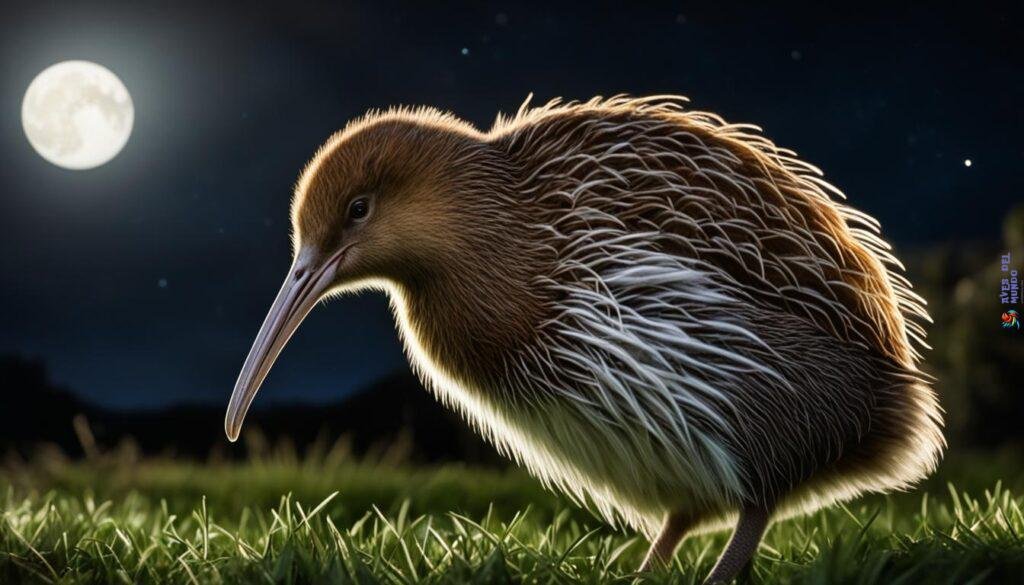
The kiwi bird is a unique and treasured symbol of New Zealand. With its round body, short wings, and long beak, the kiwi has a distinctive look that sets it apart from other birds. Being flightless, the kiwi has evolved to fill the niche of ground-dwelling birds, and its muscular legs allow it to move swiftly through the dense vegetation of New Zealand’s forests.
| Kiwi species | Conservation status |
|---|---|
| Apteryx australis | Endangered |
| Apteryx owenii | Near Threatened |
| Apteryx haastii | Endangered |
| Apteryx mantelli | Endangered |
The kiwi’s unique upbringing and sensitive habitat make it particularly vulnerable to threats. Introduced predators, such as stoats and cats, pose a significant risk to the kiwi population. Moreover, habitat loss from deforestation and human activities further exacerbate the challenges faced by these remarkable birds.
The kiwi bird is a true symbol of New Zealand and its efforts to protect its native wildlife. By supporting conservation initiatives and promoting responsible tourism, we can ensure the survival of this remarkable flightless bird for future generations. Together, we can make a difference!
The Melodious Tui: A Songbird of New Zealand
The tui bird is a native songbird of New Zealand known for its beautiful melodies and unique vocalizations. With its striking appearance, featuring iridescent plumage and a white tuft at the throat, the tui is a fascinating species. This native bird not only captivates with its melodious songs but also plays a crucial role in pollination, making it an essential part of New Zealand’s ecosystem.
«The tui’s songs fill the air, creating an enchanting symphony that echoes through the forests and gardens of New Zealand. Its ability to mimic sounds and incorporate various notes into its melodious tunes is truly remarkable.» – Birdwatcher Ben Andrews
The Tui in New Zealand
The tui is a common sight in forests and gardens throughout the country, darting among the trees in search of nectar and insects. With their long, curved beaks, they are specially adapted to feed on the nectar of native flowers. Their role in pollination facilitates the reproduction of plants and contributes to the diversity of New Zealand’s flora.
Additionally, the tui’s unique vocalizations play an important part in their social interactions and territorial defense. These vocal displays are not only captivating to human listeners but also serve as a means for tuis to communicate with each other and establish their presence in their environment.
Visual Appeal and Iridescent Plumage
The tui’s appearance is as captivating as its melodies. It boasts glistening, iridescent feathers that shimmer in hues of purple, green, and blue, creating a mesmerizing visual display. This remarkable plumage is a result of specialized feathers that refract light, giving the tui its stunning appearance.

Tui Conservation Status
While the tui is relatively common throughout New Zealand, like many native bird species, it faces threats from habitat loss and introduced predators. Conservation efforts are focused on protecting its natural habitat, including forests and gardens, and raising awareness about the importance of preserving the tui and its unique role in New Zealand’s biodiversity.
| Conservation Status | Population Trend |
|---|---|
| Not Threatened | Stable |

The tui serves as a symbol of New Zealand’s natural beauty and rich avian life. Its distinct melodies, vibrant plumage, and important ecological contributions make it a beloved and essential part of the country’s native bird species.
The Graceful Kereru: New Zealand’s Pigeon
The kereru, also known as the New Zealand pigeon, is a large and colorful bird that can be found across the country. With its distinctive appearance and behavior, the kereru holds a special place among the native birds of New Zealand.
This magnificent bird is known for its graceful flight, as it soars through the sky with ease. Its wings create a gentle whooshing sound as it navigates the forested landscapes. The kereru’s flight is not only a sight to behold but also serves a vital purpose in the ecosystem.
The kereru plays a crucial role in the dispersal of native tree seeds, contributing to the regeneration of forests. As it feeds on the fruit and berries of various tree species, it inadvertently helps in the distribution of seeds. The kereru’s ability to consume large fruit enables it to swallow seeds whole, which are then dispersed over significant distances. This process aids in the growth and diversity of native forests, supporting the ecosystem and other wildlife.
As an integral part of New Zealand’s biodiversity, the kereru’s conservation status is closely monitored. The introduction of predatory species, such as rats and stoats, poses a significant threat to the kereru population and other native birds. Efforts are being made to mitigate these threats and protect the kereru’s habitat.
To appreciate the beauty of the kereru, here is an image of this graceful bird:

The Kereru at a Glance:
| Common Name | Kereru |
|---|---|
| Scientific Name | Hemiphaga novaeseelandiae |
| Conservation Status | At Risk – Declining |
| Size | Approximately 51 cm (20 in) in length |
| Weight | Up to 650 grams (23 oz) |
| Habitat | Forests, woodlands, and coastal areas |
| Distinctive Features | Large size, colorful plumage, and a distinctive cooing sound |
As you explore the diverse avifauna of New Zealand, keep an eye out for the kereru. Its vibrant plumage and graceful presence are sure to leave a lasting impression. Remember, protecting the kereru and its habitat ensures the preservation of one of New Zealand’s unique and beloved native birds.
The Energetic Fantail: A Delightful Native Bird
The fantail bird, also known as the piwakawaka, is a small and lively avian species that is indigenous to New Zealand. With its distinct fan-shaped tail and agile flight patterns, the fantail bird is a captivating sight to behold. It is commonly found in forests and gardens throughout the country, where it flits about in search of insects, its primary source of food.
This delightful bird’s playful and curious nature makes it a favorite among birdwatchers. The fantail’s inquisitive demeanor and acrobatic movements add an element of joy to any birdwatching excursion. Its vivid plumage, which can range from grayish brown to olive green, provides a vibrant contrast against the lush green foliage of its habitat.
The fantail bird’s name, piwakawaka, is derived from Māori mythology. According to legend, the fantail was responsible for bringing fire to humans – a significant gift that enabled their survival. This cultural significance further enhances the appeal of the fantail bird among the people of New Zealand.
«The fantail bird’s lively presence in New Zealand’s forests and gardens adds a touch of magic to the natural environment, captivating both locals and visitors alike.»
Key Characteristics of the Fantail Bird:
- Size: Approximately 6 inches (15 centimeters) in length
- Wingspan: 7-9 inches (18-24 centimeters)
- Weight: 0.4-0.6 ounces (12-15 grams)
- Tail: Fan-shaped, with long, narrow and sleek feathers
- Habitat: Forests, gardens, and shrublands
- Feeding Habits: Insectivorous, primarily feeds on flies, wasps, and moths
- Behavior: Curious, playful, and highly agile in flight
Despite its seemingly lighthearted disposition, the fantail bird is a skilled hunter, using its quick reflexes and maneuverability to catch insects mid-flight. Its ability to change direction swiftly and hover in mid-air makes it an agile predator in its quest for sustenance.
Like many native birds of New Zealand, the fantail bird faces challenges due to habitat loss and predation by introduced species. Conservation efforts play a crucial role in safeguarding the future of this delightful avian species.

| Conservation Status | Population Trend |
|---|---|
| Nationally Vulnerable | Declining |
The Intelligent Kea: New Zealand’s Alpine Parrot
The kea is a fascinating and intelligent bird species that is native to the alpine regions of New Zealand’s South Island. These mischievous parrots are known for their curious nature and problem-solving abilities, making them a delight to observe in their natural habitat.
The kea’s stunning plumage and unique personality make it a sought-after sighting for bird enthusiasts and photographers alike. With its vibrant green feathers and bright orange underwing, the kea stands out against the backdrop of the stunning alpine landscapes it calls home.
These native birds of New Zealand have adapted to thrive in harsh alpine environments, where they display remarkable resourcefulness. Keas have been observed using their sharp beaks to manipulate objects and solve puzzles, displaying a level of intelligence comparable to some primates.
Keas have been known to exhibit playful behavior, often engaging in games of tug-of-war with tourists’ belongings or solving intricate puzzles to obtain rewards. Their mischievous antics and inquisitive nature have earned them a reputation as the «clowns of the mountains.»
Another notable behavior of keas is their communal roosting behavior. During the winter months, these birds gather in large groups, forming tight-knit communities known as «roosts.» This behavior provides them with valuable social interaction and protection from the elements.
Conservation Challenges and Efforts
The kea population faces several conservation challenges due to human activities and introduced predators. Habitat loss, disturbance from tourism, and predation by invasive species such as stoats and possums have contributed to the decline of kea populations.
Efforts are underway to protect and conserve these unique birds. Conservation organizations and the New Zealand government have implemented measures to minimize disturbances in the kea’s habitat and raise awareness about their conservation needs. Research and monitoring programs help scientists better understand kea behavior and develop strategies to mitigate threats.
Interesting Facts about Keas
- Keas are the world’s only alpine parrot species.
- They have a specialized curved beak that allows them to extract insect larvae from trees.
- Keas mate for life and form strong pair bonds.
- These birds are highly adaptable and have been observed using tools to solve problems.

The kea’s unique characteristics and stunning presence make it a captivating addition to New Zealand’s diverse avian ecosystem. Observing and learning about these fascinating birds contributes to the appreciation and conservation of New Zealand’s native bird species.
Recommended Guidebook: Birds of New Zealand
If you’re fascinated by the avian life in New Zealand, then «Birds of New Zealand» by Paul Scofield and Brent Stephenson is an essential resource for you. This highly recommended guidebook is packed with knowledge, featuring nearly a thousand new photographs and up-to-date information on the identification, behavior, and distribution of the country’s bird species.
Whether you’re a passionate birdwatcher or a nature enthusiast seeking to expand your knowledge, this comprehensive guide will enrich your understanding of New Zealand’s remarkable birdlife. The book is expertly written by Scofield and Stephenson, renowned ornithologists with extensive experience in studying and documenting the avifauna of New Zealand.
Inside «Birds of New Zealand,» you’ll find detailed descriptions of each bird species, including their physical characteristics, habitats, and conservation status. The authors have taken great care to provide accurate and reliable information, making it a valuable reference guide.
In addition to the informative text, the guidebook boasts stunning photographs that capture the beauty and diversity of New Zealand bird species. These visuals allow you to appreciate the intricate plumage, unique features, and vibrant colors that make each bird species distinct.
Whether you’re planning a birdwatching trip to New Zealand or simply want to learn more about its avian residents, «Birds of New Zealand» is an indispensable companion. Let this comprehensive guidebook immerse you in the captivating world of New Zealand’s birdlife.

Key Features of «Birds of New Zealand» Guidebook
| Book Features | Details |
|---|---|
| Number of Photographs | Nearly a thousand |
| Authors | Paul Scofield and Brent Stephenson |
| Topics Covered | Identification, behavior, and distribution of bird species in New Zealand |
| Conservation Information | Includes the conservation status of each bird species |
| Publication Date | Current and up-to-date information |
The Breathtaking Birdlife of Tiritiri Matangi Island
Tiritiri Matangi, a captivating island sanctuary located in New Zealand, is renowned for its awe-inspiring birdlife. This pristine paradise is home to a diverse array of native bird species, offering a remarkable experience for birdwatching enthusiasts.
Visitors to Tiritiri Matangi have the opportunity to encounter a wide range of avian wonders, including the highly endangered takahe and the elusive New Zealand storm petrel. These remarkable inhabitants showcase the rich biodiversity that New Zealand has to offer.
Immerse yourself in the magical world of Tiritiri Matangi as you observe and appreciate the beauty of its avian fauna. The island’s carefully preserved ecosystem provides a safe haven for these magnificent creatures, enabling visitors to witness them in their natural habitat.

As you explore the island’s lush landscapes and listen to the enchanting melodies of the native birds, you’ll be captivated by the splendor of Tiritiri Matangi. From the vibrant plumage of the takahe to the graceful flight of the New Zealand storm petrel, every moment spent in this sanctuary is sure to leave a lasting impression.
The Endangered Takahe
The endangered takahe is one of the most sought-after sightings on Tiritiri Matangi. With its striking blue plumage and distinctive red beak, this flightless bird is a testament to the island’s commitment to preserving its unique birdlife. Witnessing the takahe in its natural habitat is a rare and unforgettable experience.
The Rare New Zealand Storm Petrel
The New Zealand storm petrel, a rare and elusive seabird, adds to the allure of Tiritiri Matangi. This remarkable species breeds nowhere else in the world but on this island. Its presence is a testament to the success of conservation efforts and the importance of preserving natural habitats for vulnerable bird species.
«Tiritiri Matangi offers a truly remarkable birdwatching experience, providing a glimpse into the extraordinary avian diversity of New Zealand. The island’s commitment to conservation ensures that both common and rare native bird species thrive in this sanctuary.»
– Birdwatching Enthusiast
Birdwatching in New Zealand: Top Locations
New Zealand offers numerous excellent locations for birdwatching, providing unique opportunities to observe a variety of bird species. Whether you are a seasoned birdwatcher or a nature enthusiast, the country’s diverse landscapes and rich avian biodiversity are sure to captivate you. Some of the best places for birdwatching in New Zealand include:
1. Fiordland National Park

Located in the southwest corner of the South Island, Fiordland National Park is renowned for its stunning fjords, lush rainforests, and pristine lakes. The park is home to several iconic bird species, including the endangered Southern Brown Kiwi and the rare Fiordland Crested Penguin. Birdwatchers can explore the park’s extensive network of hiking trails and take boat cruises to observe these magnificent creatures in their natural habitat.
2. Otago Peninsula
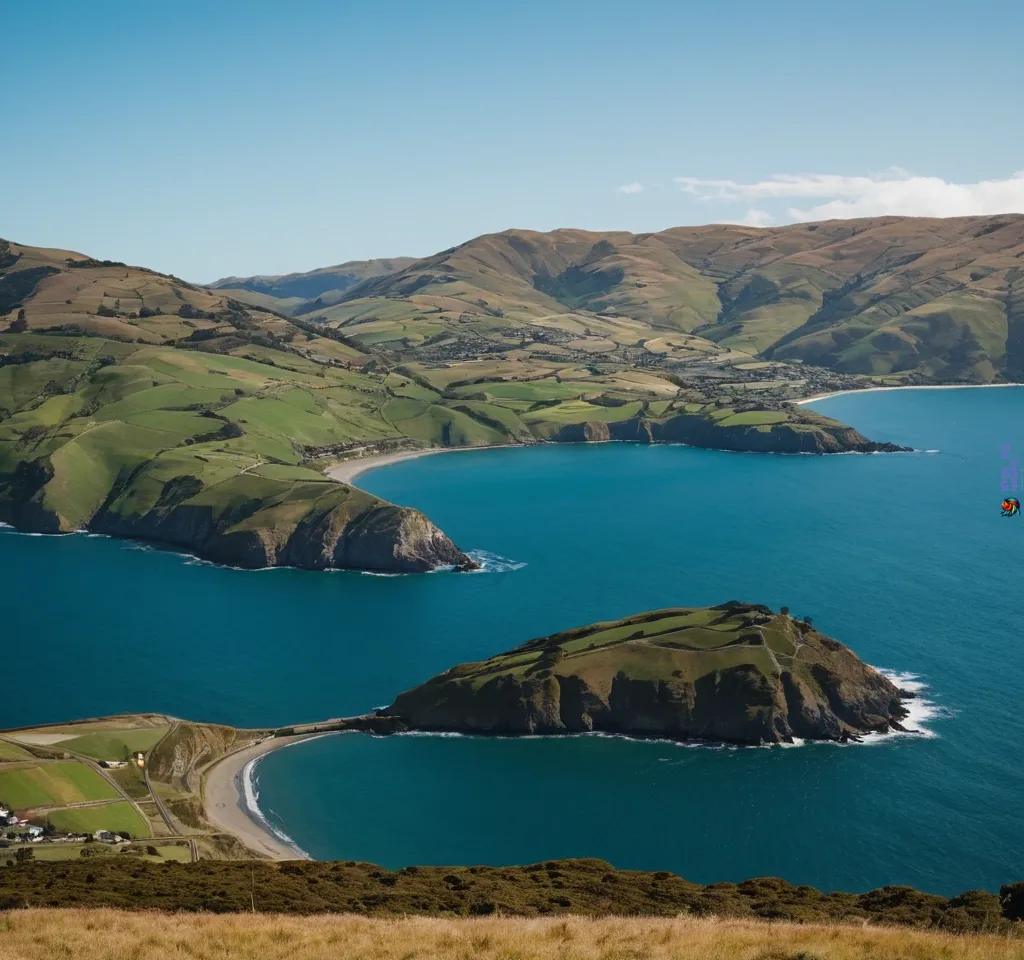
The Otago Peninsula, near Dunedin on the South Island, is a haven for birdwatchers. This scenic coastal region is known for its abundant wildlife, including unique seabird colonies and the charismatic Yellow-eyed Penguin. Visitors can join guided tours and experience close encounters with these fascinating creatures. The Royal Albatross Centre is also a must-visit spot, offering breathtaking views of the majestic albatross soaring overhead.
3. Whanganui River Valley

Situated on the North Island, the Whanganui River Valley is a remote and rugged wilderness, perfect for birdwatching adventures. This pristine environment is home to many native bird species, such as the North Island brown kiwi, the New Zealand falcon, and the beautiful kaka parrot. Exploring the Whanganui River by kayak or joining guided birding tours allows you to immerse yourself in the untamed beauty of this unique region.
Other notable birdwatching locations in New Zealand include Tiritiri Matangi Island, the Catlins, Stewart Island, and the Marlborough Sounds. Each of these locations offers a distinct birdwatching experience with a chance to encounter unique endemic species and witness the wonders of New Zealand’s avian world.
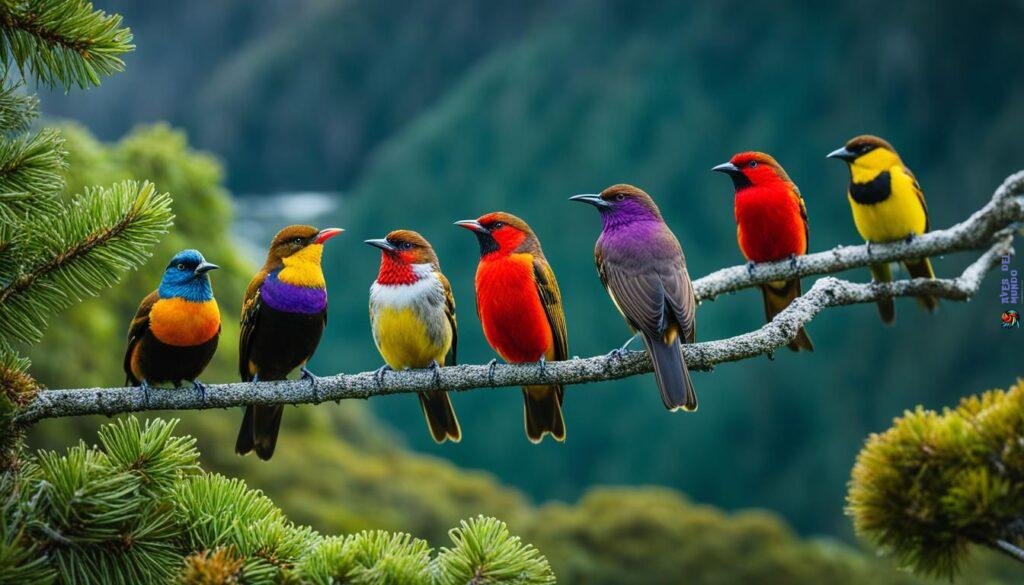
| Location | Notable Bird Species |
|---|---|
| Fiordland National Park | Southern Brown Kiwi, Fiordland Crested Penguin |
| Otago Peninsula | Yellow-eyed Penguin, Royal Albatross |
| Whanganui River Valley | North Island Brown Kiwi, New Zealand Falcon, Kaka Parrot |
| Tiritiri Matangi Island | Takahe, New Zealand Storm Petrel |
| Catlins | Yellowhead, New Zealand Sea Lion |
| Stewart Island | Saddleback, Stewart Island Shag |
| Marlborough Sounds | King Shag, Wandering Albatross |
Conservation Efforts: Protecting New Zealand’s Birds
New Zealand is committed to preserving its diverse bird species through various conservation initiatives. These efforts aim to address the threats posed to bird populations and ensure their long-term survival. By implementing predator control programs, habitat restoration projects, and the establishment of bird sanctuaries, New Zealand is actively working to protect its avian treasures.
Threats to Bird Populations
Birds in New Zealand face several significant threats that endanger their population numbers. The primary threats include:
- Introduced Predators: Rats, stoats, and other introduced predators pose a significant risk to bird populations. These predators prey on eggs, nestlings, and adult birds, contributing to declines in some native species.
- Habitat Loss: Deforestation and habitat degradation have a detrimental impact on bird populations. The destruction of native forests and wetlands reduces suitable habitats for birds to breed, forage, and seek shelter.
Conservation Initiatives
New Zealand has implemented various conservation initiatives to counteract the threats faced by its bird species. These efforts include:
- Predator Control Programs: To mitigate the impact of introduced predators, New Zealand has launched extensive predator control programs. These programs involve trapping and poisoning methods to reduce predator populations and protect vulnerable bird species.
- Habitat Restoration Projects: Efforts are underway to restore and protect critical bird habitats. Native reforestation projects, wetland restoration, and protection of natural reserves contribute to creating suitable environments for New Zealand’s bird populations.
- Bird Sanctuaries: The creation of bird sanctuaries provides safe havens for endangered bird species. These protected areas offer suitable habitats free from introduced predators, allowing populations to recover and thrive.
Through these comprehensive conservation initiatives, New Zealand aims to safeguard its unique and endangered avian biodiversity. By protecting their habitats and reducing threats, the country continues its commitment to the conservation of its beloved bird species.

“Protecting New Zealand’s extraordinary birdlife is an ongoing responsibility that requires collective efforts and targeted conservation actions.”
Birdwatching Tips and Etiquette
When engaging in the fascinating activity of birdwatching in New Zealand, it is essential to follow certain guidelines and observe proper etiquette. Respecting the birds and their habitats is fundamental to preserving their natural behavior and ensuring a positive experience for both birdwatchers and the avian species they admire. Here are some birdwatching tips and a code of conduct to abide by:
Maintain a Respectful Distance
Keep a respectable distance from the birds to avoid disturbing them or causing any harm. This applies not only to the birds themselves but also to their nests, roosting areas, and feeding grounds. Observe from a distance using binoculars or a camera with a telephoto lens to get a closer look without intruding on their space.
Stay Mindful of Local Regulations
Be aware of any local regulations or guidelines put in place to protect the birds and their habitats. Some areas may have specific rules regarding access, designated trails, or restricted zones. Familiarize yourself with these regulations and abide by them to ensure the well-being of the birds and support their conservation efforts.
Follow Designated Trails and Paths
Stick to designated trails and paths while exploring birdwatching locations. This helps minimize disturbance to the birds and their surroundings, as well as prevent unintentional damage to fragile ecosystems. Consider joining guided tours or consulting local birdwatching organizations for recommended routes and best practices.
Do No Harm
Leave no trace of your presence while birdwatching. Avoid littering, disturbing vegetation, or engaging in any activities that may harm the birds or their habitats. Take care to protect their environment and contribute to the overall conservation of New Zealand’s natural landscapes.
Respect Other Birdwatchers
Be considerate of other birdwatchers and nature enthusiasts sharing the same space. Avoid loud noises, sudden movements, or actions that may disrupt their experience or scare away the birds. Showing respect for fellow birdwatchers fosters a harmonious and inclusive community that appreciates the beauty of New Zealand’s birdlife.
Share Your Passion Responsibly
Spread awareness and inspire others by sharing your birdwatching experiences responsibly. Respect the privacy and tranquility of the birds and the areas where they thrive when photographing or documenting your encounters. Use your platform to advocate for bird conservation and educate others about the importance of protecting these magnificent creatures.
By adhering to these birdwatching tips and etiquette guidelines, you can fully enjoy the wonders of New Zealand’s avian world while contributing to their preservation for future generations to appreciate.
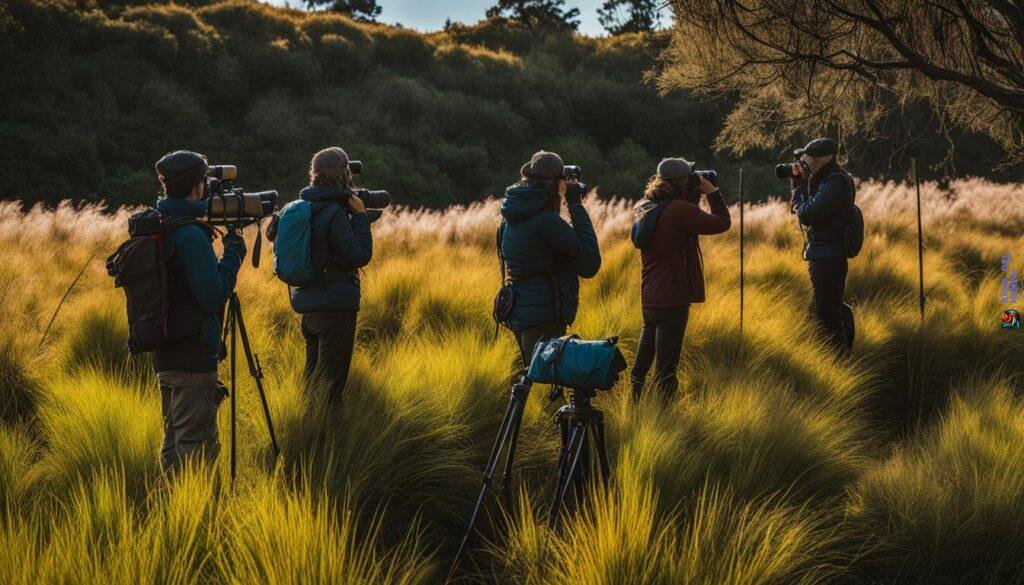
Bird Photography: Capturing the Beauty of New Zealand’s Birds
New Zealand’s diverse birdlife offers unparalleled opportunities for bird photography. Whether you’re a professional photographer or an amateur enthusiast, capturing the beauty of these avian species can be a rewarding experience. To ensure you make the most of your bird photography adventures in New Zealand, here are some helpful tips to keep in mind:
1. Equip Yourself Properly
Investing in the right equipment is essential for bird photography. A telephoto lens with a long focal length will allow you to capture close-ups of birds without disturbing their natural behavior. Combine this with a sturdy tripod to ensure stability and eliminate camera shake, resulting in sharp and well-focused images.
2. Be Patient and Persistent
Birds can be elusive and unpredictable subjects to photograph. It requires patience and persistence to get the perfect shot. Spend time observing their behavior and movement patterns, allowing you to anticipate their actions and adjust your camera settings accordingly. Remember, good things come to those who wait!
3. Respect the Birds
When photographing birds, it’s crucial to respect their natural behavior and habitat. Avoid any actions that could disturb or harm the birds, such as getting too close or making sudden movements. Stay alert and observe from a distance to capture them in their natural environment without causing any distress.
«Bird photography is not just about capturing stunning images; it’s about preserving the beauty and fragile existence of these amazing creatures.»
4. Study Bird Behavior and Habitat
Understanding the behavior and habitat of the birds you intend to photograph is essential. Research their feeding habits, nesting locations, and preferred environments to increase your chances of capturing unique, natural moments. Knowledge of their natural habitat also allows you to scout the best locations for photography.
5. Experiment with Lighting and Composition
Lighting plays a crucial role in photography. Capture birds in soft, diffused light, such as during the golden hours of early morning or late evening. Experiment with different angles and compositions to add interest and artistic flair to your images. Look for opportunities to create depth and incorporate elements such as branches or flowers to enhance the visual appeal.
6. Shoot in Burst Mode
Birds are constantly in motion, making it challenging to capture the perfect moment. Shooting in burst mode allows you to capture a series of images in quick succession, increasing your chances of obtaining that one exceptional shot where the bird’s wings are perfectly spread or its gaze is locked into the camera.
7. Edit with Care
Post-processing is an important step in bird photography. Use editing software to enhance colors, adjust sharpness, and crop images for better composition. However, be mindful not to overdo it, as natural-looking photographs are often more appealing. Preserve the authenticity and beauty of New Zealand’s birds in your final edits.
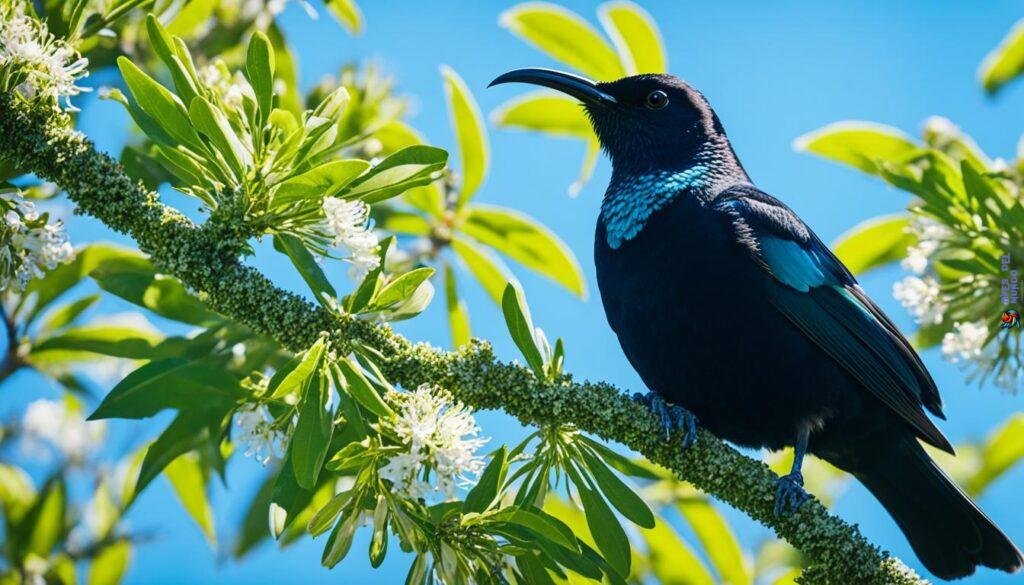
8. Join Bird Photography Communities
Connecting with fellow bird photography enthusiasts can provide inspiration, guidance, and valuable feedback on your work. Join online communities, participate in forums, and share your images and experiences. Engaging with others who share your passion for bird photography can enhance your skills and foster a sense of community.
9. Respect Nature and Preserve Wildlife
Remember that conservation should be at the forefront of your mind when photographing birds. Follow established codes of conduct for wildlife photography, respect the environment, and ensure that your actions do not cause any harm. Preserve the beauty of New Zealand’s birdlife for future generations to appreciate and protect.
Volunteering for Bird Conservation in New Zealand
Are you passionate about bird conservation and want to make a difference? New Zealand offers exciting volunteering opportunities to contribute to the protection and preservation of its unique bird species. By participating in conservation projects, you can actively contribute to the restoration of habitats, monitor predator populations, and conduct important bird population surveys.
Volunteering provides a unique chance to immerse yourself in the beauty of New Zealand’s birdlife while learning more about their specific conservation needs. Whether you are a local resident or an international visitor, there are various ways you can get involved and actively contribute to bird conservation in this stunning country.
Conservation Projects in New Zealand
Conservation projects in New Zealand focus on a range of activities aimed at protecting bird species and their habitats. Some of the key projects you can be a part of include:
- Habitat Restoration: Help restore native habitats by planting trees, removing invasive species, and creating suitable nesting sites for birds.
- Predator Monitoring: Participate in predator monitoring programs to help control and manage introduced predators that pose a threat to native bird populations.
- Bird Population Surveys: Join research teams to conduct bird population surveys and collect crucial data on distribution, abundance, and breeding success.
These projects provide an invaluable opportunity to work alongside conservation professionals, researchers, and fellow volunteers, making a tangible impact on the well-being of New Zealand’s bird species.
Get Involved in Bird Conservation
If you are interested in volunteering for bird conservation in New Zealand, there are several organizations and initiatives that offer opportunities to get involved. Some notable ones include:
- Department of Conservation (DOC): DOC offers volunteering programs in various conservation areas across New Zealand, including bird-focused projects.
- Forest & Bird: Forest & Bird is a leading conservation organization that welcomes volunteers to assist in their bird conservation initiatives.
- Kiwis for kiwi: Kiwis for kiwi is a national charity focused on kiwi conservation. They offer volunteer opportunities to support their efforts in protecting this iconic bird.
By volunteering, not only can you contribute to bird conservation, but you can also gain a deeper understanding of New Zealand’s unique ecosystems and wildlife. It’s a rewarding experience that allows you to connect with nature and contribute to a meaningful cause.
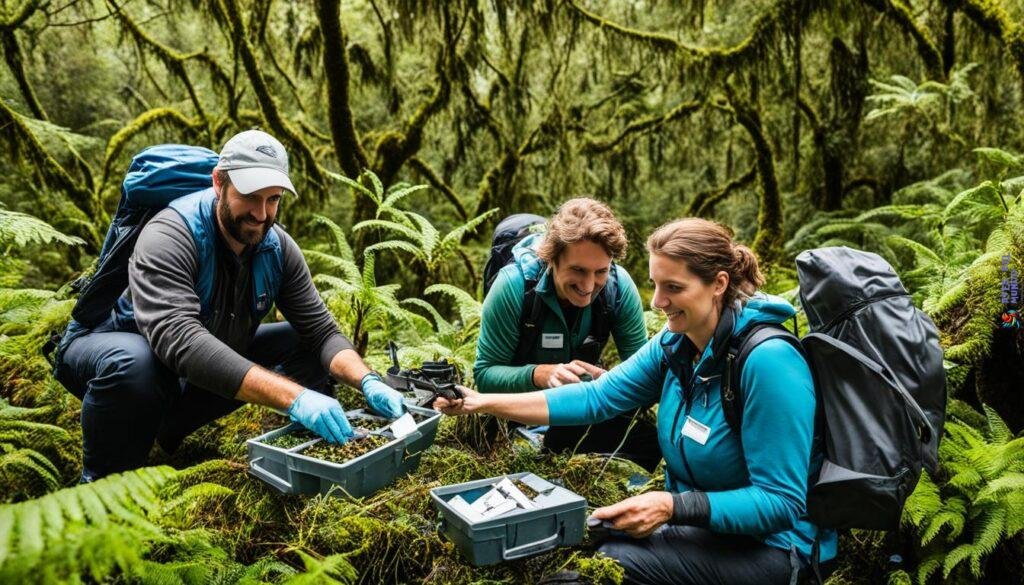
Image: Volunteering opportunities for bird conservation in New Zealand
Birding Events and Festivals in New Zealand
Immerse yourself in the vibrant birding community of New Zealand by participating in the exciting birding events and festivals held throughout the year. These gatherings bring together bird enthusiasts, experts, and researchers, providing a wonderful opportunity to celebrate the country’s diverse avian species and learn from one another.
During these events, you can join birdwatching outings led by experienced guides, who will take you to some of the best birding locations in New Zealand. Explore the breathtaking national parks, coastal areas, and offshore islands that are teeming with a wide variety of bird species. Observe these magnificent creatures in their natural habitats and marvel at their beauty and behavior.
In addition to birdwatching, these events also offer workshops and educational talks by renowned bird experts. Enhance your knowledge of New Zealand’s birdlife as you delve into topics such as bird identification, behavior, and conservation. You’ll gain valuable insights into the challenges faced by bird populations and how you can contribute to their protection.
Whether you’re a seasoned birdwatcher or a novice, attending these birding events and festivals in New Zealand is an unforgettable experience. Connect with like-minded individuals who share your passion for birds, build friendships, and create lasting memories while exploring the remarkable avian diversity of this beautiful country.



